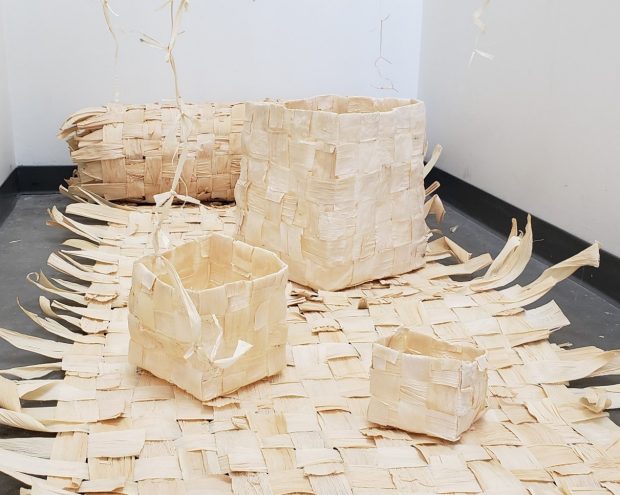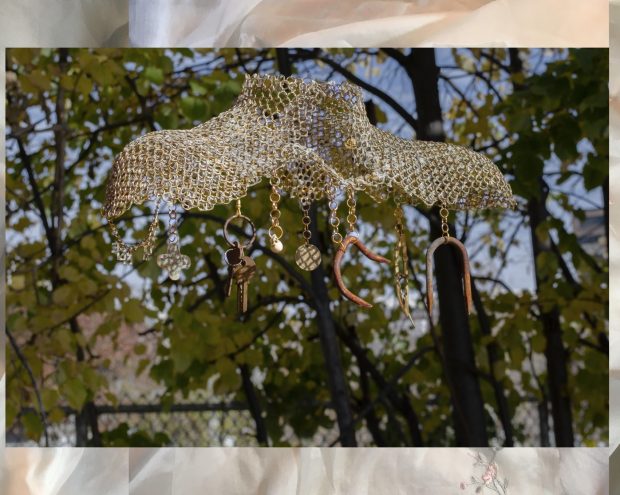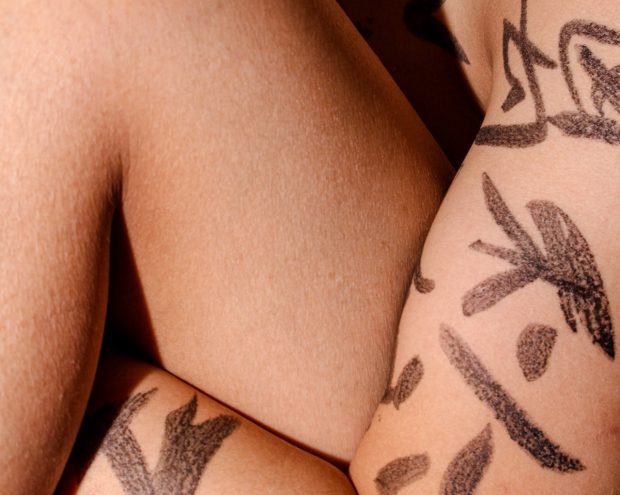The Place of Objects and Rituals in Self-Mapping Practices.
For the first grouping of artists, I wish to bring your attention to the relationships we establish with material objects, and how they are enhanced with ritualistic gestures. In her installation Alive memories and happy places, Anahi Arciniega weaved corned husk into an inviting congregational area, recalling memories of food prepared with loved ones in her native country, Mexico. Arciniega presents commensality as a sequence of movements, smells, and sounds, which are the makeup of a language lof love and care. The corn husks stand-in for a cultural landscape and environment that are integrally part of her core. In the same vein as Arciniega, flora fauna’s sculpture what my ancestors wore uses social material as references to a state of a self at the junction of two cultures. Carefully attuned to their body, this shoulder-molded armour made of Korean paper and chainmail taps into the histories of their mixed ancestry. Adorned with little charms, this wearable piece demonstrates the capacity to softly carve a space for a self that is not fractured, but whole. In conversation, Le Lin asks poignant questions such as: how does a queer and trans body ascribes itself onto the notion of the homeland? How does it mesh with and integrate micro and macro narratives of a place, diasporic movements, and language? The ritual at the heart of the project 我只穿了一条短裤 I only wore a pair of shorts 回味 / Aftertaste made possible a cognitive response to these interrogations.
For these artists, the themes manifested as a mnemonic device, an archival blueprint for them and others who share similar ways of being.
- Geneviève Wallen, exhibition coordinator.



